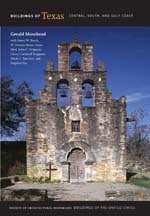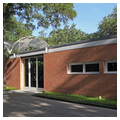This long, low, flat-roofed, courtyard house introduced Philip Johnson and Miesian architecture to Houston. The house was built by French immigrants Dominique and John de Menil, who lived here until their deaths in 1997 and 1973, respectively. The house, now owned by the Menil Foundation and maintained much as it was when Dominique de Menil lived here, launched the austere style of Mies van der Rohe as the high style of Houston modernism in the 1950s. It became what architectural historian Ellen Beasley described, in a historic structures report prepared in 2002 prior to the restoration, as the “laboratory” where Dominique and John de Menil formulated their distinctive modern style, one that combined the rigorous poetics of Mies with the surrealism of the brilliant and eccentric couturier Charles James, who designed the house's interiors, and the sensitivity to potential relationships between objects associated with museum director Jermayne MacAgy, whom the Menils counted as a mentor. The Menil House was restored by Stern and Bucek for the Menil Foundation in 2006.
You are here
Menil House
If SAH Archipedia has been useful to you, please consider supporting it.
SAH Archipedia tells the story of the United States through its buildings, landscapes, and cities. This freely available resource empowers the public with authoritative knowledge that deepens their understanding and appreciation of the built environment. But the Society of Architectural Historians, which created SAH Archipedia with University of Virginia Press, needs your support to maintain the high-caliber research, writing, photography, cartography, editing, design, and programming that make SAH Archipedia a trusted online resource available to all who value the history of place, heritage tourism, and learning.





